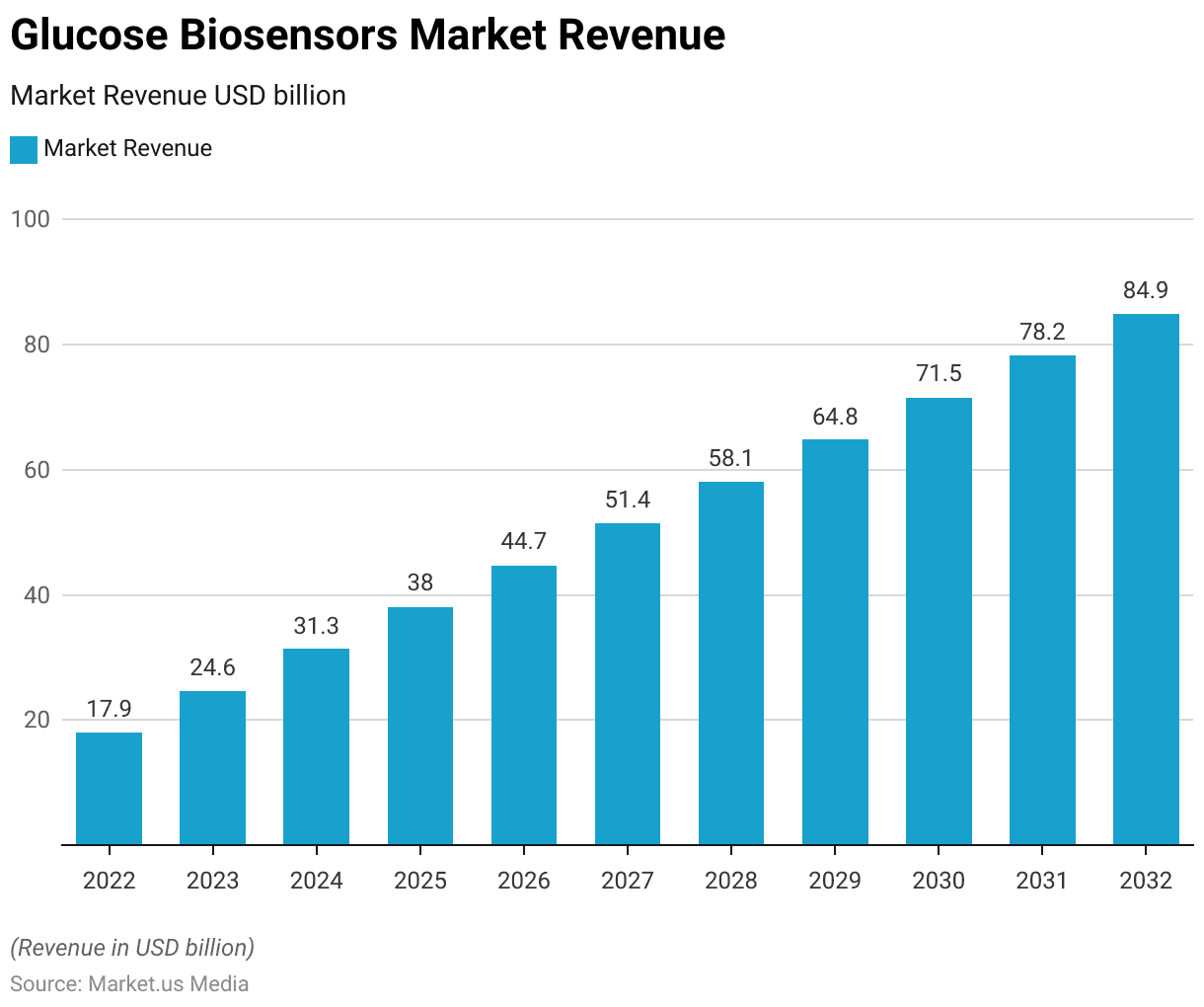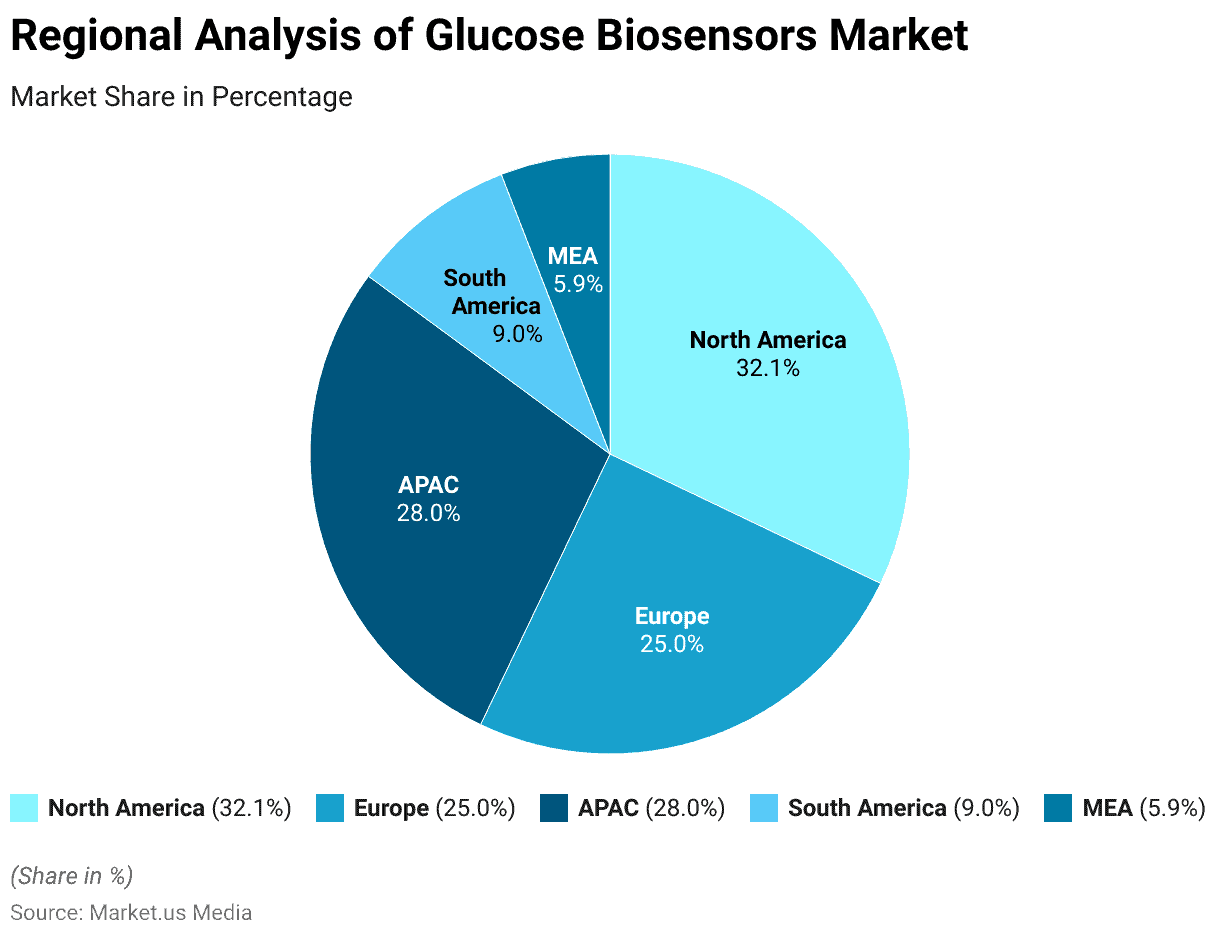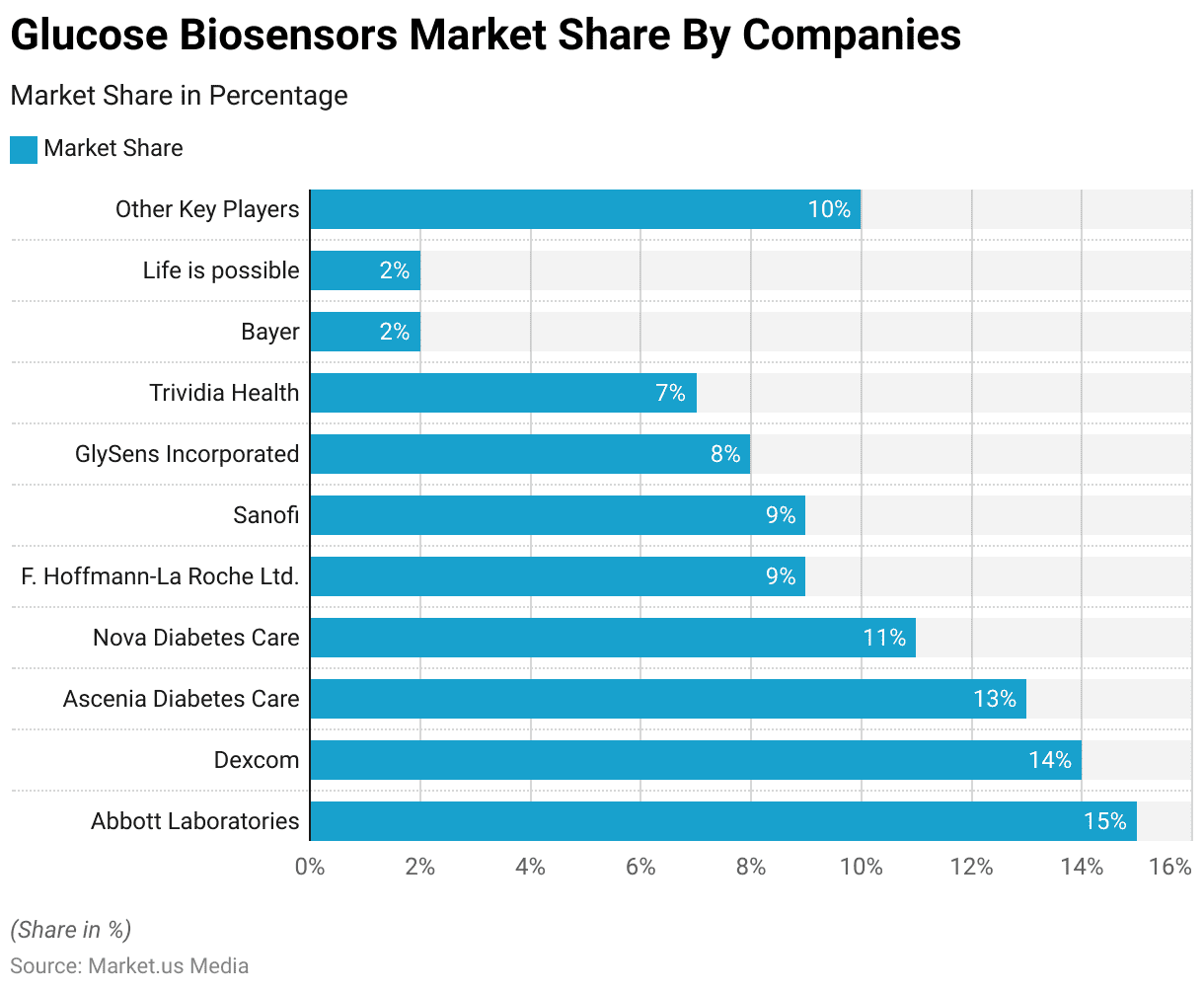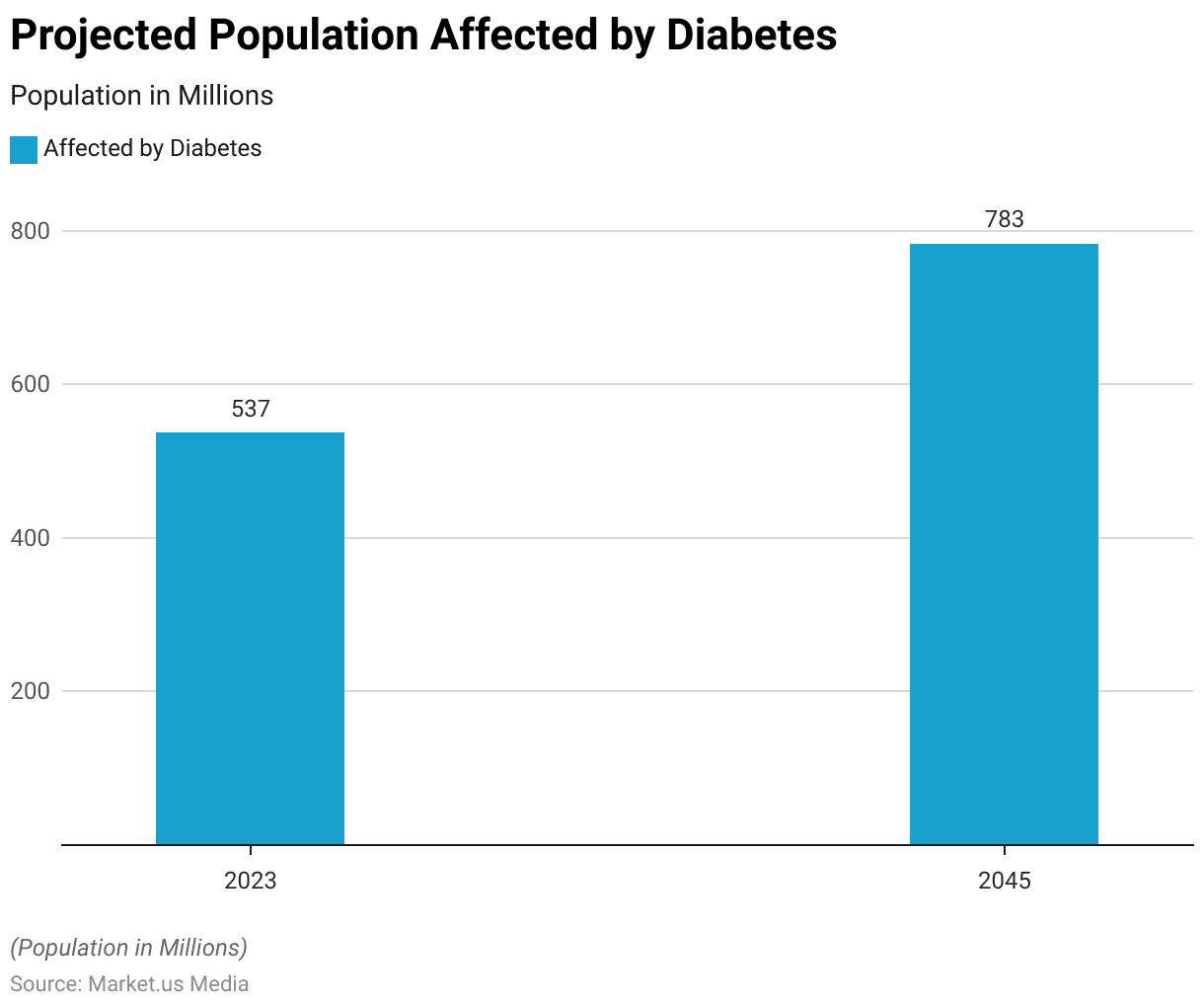Table of Contents
Introduction
According to Glucose Biosensors Statistics, Glucose biosensors play a vital role in the healthcare sector, particularly in the monitoring and regulation of diabetes.
Utilizing advanced biotechnological principles, these tools identify and measure glucose levels in biological samples.
Typically including a bioreceptor, transducer, and electronic system for signal processing, glucose biosensors find varied uses in home glucose monitoring devices, continuous glucose monitoring systems, and clinical environments.
Their versatility extends to different sectors like healthcare, food and beverages, and research laboratories.
While the market for glucose biosensors is flourishing, challenges such as accuracy concerns and the need for continuous innovation persist.
Editor’s Choice
- The glucose biosensors market has exhibited robust growth over the past decade at a CAGR of 7.6 %.
- In 2023, the glucose biosensors market revenue stood at USD 24.64 billion.
- North America stands as a major player, commanding a substantial 32.1% share.
- Abbott Laboratories leads with a notable market share of 15%, showcasing its significant presence and influence in the sector.
- Presently, an estimated 537 million individuals worldwide are affected by diabetes.
- The commercial market gained momentum with the launch of the MediSense ExacTech blood glucose biosensor in 1987.
- Notable corporate developments include Abbott’s acquisition of MediSense for $867 million in 1996 and LifeScan’s purchase of Inverness Medical’s glucose testing business for $1.3 billion in 2001.

Global Glucose Biosensors Market Overview
Global Glucose Biosensors Market Size
- The glucose biosensors market has exhibited robust growth over the past decade at a CAGR of 7.6 %, with a significant upward trajectory in revenue.
- In 2022, the market revenue stood at USD 17.94 billion, experiencing a substantial increase to USD 24.64 billion in 2023.
- The upward momentum persisted, surpassing USD 64.84 billion in 2029, USD 71.54 billion in 2030, and USD 78.24 billion in 2031.
- As we look forward, the projected figures indicate sustained growth, with the market anticipated to reach USD 84.94 billion in 2032.
Regional Analysis of Global Glucose Biosensors Market
- North America stands as a major player, commanding a substantial 32.1% share.
- This dominance can be attributed to factors such as advanced healthcare infrastructure, technological innovations, and a high prevalence of diabetes, driving the demand for glucose monitoring solutions.
- In Europe, the market maintains a robust presence, accounting for 25.0% of the total market share. The region’s contribution reflects a combination of well-established healthcare systems, research and development initiatives, and a growing awareness of the importance of glucose monitoring in managing chronic conditions.
- The Asia-Pacific (APAC) region emerges as a significant player, holding a considerable 28.0% market share.
- This reflects the region’s rising economic prosperity, increasing healthcare investments, and a large population with a growing focus on health and wellness.
- In South America, the market share is noteworthy at 9.0%, indicative of a growing recognition of the value of glucose biosensors in healthcare management.
- The region’s share, though smaller compared to North America and Europe, suggests a positive trajectory in the adoption of these devices.
- The Middle East and Africa (MEA) region contributes 5.9% to the global market share.

Key Players in the Global Glucose Biosensors Market
- The market for glucose biosensors is characterized by a diverse landscape of key players, each contributing to the industry’s dynamics.
- Abbott Laboratories leads with a notable market share of 15%, showcasing its significant presence and influence in the sector.
- Dexcom follows closely, holding a substantial 14% market share, underscoring its prominence in the continuous glucose monitoring segment.
- Ascenia Diabetes Care and Nova Diabetes Care contribute 13% and 11% respectively, reflecting their strong market positions and contributions to glucose monitoring solutions.
- F. Hoffmann-La Roche Ltd. and Sanofi share a combined 18% market share, attesting to their considerable influence in the pharmaceutical and healthcare sectors.
- GlySens Incorporated, Trividia Health, Bayer, and Life Possible collectively account for 29%, each making distinct market contributions.

Factors Driving the Demand for Glucose Biosensors
- The World Health Organization reported approximately 1.5 million deaths attributed to diabetes in 2019. Presently, an estimated 537 million individuals worldwide are affected by diabetes.
- Projections indicate a significant increase, reaching around 783 million people living with diabetes globally by the year 2045.
- Interestingly, the nations with the highest occurrence of diabetes are concentrated predominantly on the Pacific islands.
- Globally, expenditures on healthcare related to diabetes reached an estimated 966 billion U.S. dollars in the year 2021. The countries with the highest per-patient spending on diabetes are the United States, Switzerland, and Norway.
- Specifically, in 2021, the United States allocated approximately 11,779 U.S. dollars per individual with diabetes.
- Consequently, the treatment of diabetes constitutes a substantial submarket within the pharmaceutical industry.

Timeline of Commercial Glucose Biosensor Development
- The timeline of commercial biosensor development is marked by significant milestones that have shaped the field. In 1916, the first report on protein immobilization showcased the adsorption of invertase on activated charcoal.
- The year 1922 witnessed the introduction of the first glass pH electrode, a fundamental component in biosensor technology.
- The years 1973-75 marked a groundbreaking event with the introduction of the first commercial biosensor by Yellow Springs Instruments for glucose detection.
- The medical landscape witnessed a transformative development in 1976 with the creation of the Miles Biostator, the inaugural bedside artificial pancreas.
- Notable corporate developments include Abbott’s acquisition of MediSense for $867 million in 1996 and LifeScan’s purchase of Inverness Medical’s glucose testing business for $1.3 billion in 2001.
- Abbott further strengthened its position by acquiring i-STAT for $392 million in 2003 and TheraSense for $1.2 billion in 2004.
Generations of Glucose Biosensor
First Generation Glucose Biosensor
- First-generation enzymatic glucose biosensors utilize H2O2 generation or reduction in oxygen (O2) concentration to measure glucose levels in the sample.
- These biosensors are characterized by a simple design and miniaturization, yet they face challenges.
- The amperometric measurement of H2O2 in first-generation biosensors requires a high operational potential, posing limitations. This elevated potential may lead to interference from electroactive molecules (e.g., ascorbic acid, uric acid) and certain drugs (e.g., acetaminophen).
- Additionally, oxygen solubility limitations in biological fluids may cause oxygen deficiency, impacting sensor response and narrowing the linearity of glucose concentration detection ranges.
Second Generation Glucose Biosensor
- The second-generation enzymatic glucose biosensor addresses the limitation of oxygen dependence seen in the first generation by incorporating artificial redox mediators instead of relying on an oxygen-dependent electrode.
- However, these biosensors are not ideal for implantable devices due to the use of free mediators in the solution.
- This design presents a challenge, as the concentration of these free mediators would fluctuate over time if the device were implanted in a patient.
Third Generation Glucose Biosensor
- Third-generation enzymatic glucose biosensors enable direct electron transfer between the enzyme and electrode, eliminating the need for natural or synthetic mediators.
- This advancement provides advantages like improved selectivity and sensitivity to glucose, faster response times, and a reduced operating potential.
- Challenges in this generation include enzyme leaching and the necessity for nanomaterials with optimal conductivity to facilitate direct electron transfer from the FAD-active redox center of the enzyme to the working electrode.
Fourth Generation Glucose Biosensor
- Fourth-generation glucose sensors operate by directly oxidizing glucose on the surface of the electrode.
- The fourth-generation glucose biosensor marks a significant leap in biosensing technology, incorporating advanced materials like nanomaterials and biocompatible polymers for heightened sensitivity.
- Notable improvements include innovative transduction mechanisms, such as electrochemical and optical methods, allowing real-time monitoring and versatility in applications.
Issues Concerning Glucose Biosensors
- Many challenges associated with glucose biosensors stem from factors other than the device itself.
- In almost every instance, the fundamental design of commercially successful biosensors has remained largely unchanged for an extended period.
- The prevalent approach continues to be mediated amperometric designs akin to the original MediSense ExacTech device, introduced 15 years ago.
- Companies producing glucose meters have been slow in adopting new technologies, often opting for a strategy of repackaging existing technology in a new casing.


